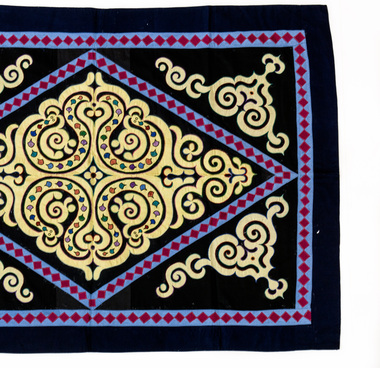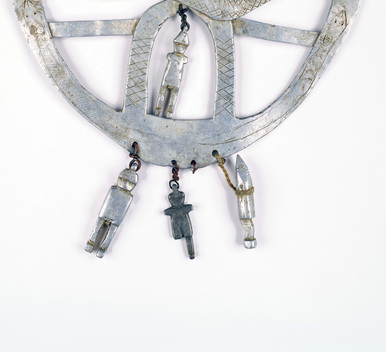Birch bark played an important role in the household of the Amur peoples. It was harvested mainly by men, women were more often engaged in making necessary utensils and products from the finished material.
Men would go to the forest to obtain birch bark from the end of May to the beginning of July. The birch bark was removed from thick trees in a single layer, and from thin trees by means of screw-shaped cuts in the bark. Then it was rolled up and boiled for three to five hours in cauldrons in thin fish broth or water.
The birch bark became soft and elastic after such treatment. It could be bent into any shape and even sewn together with nettle threads or willow roots. Sometimes the Nanai people heated birch bark over an open fire to soften it. Fish glue was used to bind the seams.
Birch bark was used to make covers for summer huts, omorochka boats, hats, but more often — utensils of different shapes and sizes. Bactericidal properties of birch bark kept products fresh longer; cereals, salt and flour did not get moist due to its water-repellent quality.
Birch bark boxes of different sizes were used to store household things, and large rectangular uel boxes served as suitcases where clothes were stored. The technology of cutting and making different household items from birch bark did not differ much.
Birch bark dishes and utensils can be divided into four main types. The first group was made of a single quadrangular piece of birch bark with bent up edges. Different large and small dishes, bowls and baskets with handles were made in this way. The second group consisted of objects sewn in the form of a cylinder with an inserted bottom made of wood or birch bark.
The third group featured items made from a single piece of birch bark according to a certain pattern: deep triangular cutouts were made at the corners or near the corners in the edge of the birch bark, and then the edges were sewn together at these places. Such dishes had a quadrangular bottom and a round mouth. Finally, there was a combined group: a cylindrical top was sewn to the third type of dishes.
The technique of
applying decorative patterns was diverse: appliqué, birch bark carving,
embossing, and painting. The edges of the containers were reinforced with
additional birch bark or wooden overlays and lined with spruce or willow roots.





